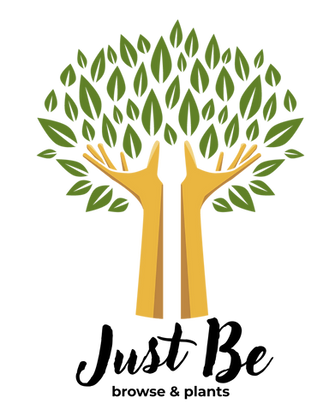A Suitcase Full of Banana Leaves and Gorilla Enrichment at the Oklahoma City Zoo
- Melody McDonald
- Oct 28
- 4 min read

This year’s Nutrition Advisory Group (NAG) Conference, hosted by the Oklahoma City Zoo, gave me one of my favorite moments so far in this work: watching gorillas enjoy enrichment in the form of browse. They got to enjoy fresh, pesticide- and herbicide-free banana leaves that I brought from home.
Bringing Fresh Browse to Oklahoma City
Before traveling, I harvested the banana leaves straight from the garden, fresh, clean, and untouched by any chemicals. At our farm, all browse is grown naturally and free from pesticides and herbicides, ensuring it’s safe and nutrient-rich for the animals who receive it.

To keep the leaves hydrated and in good condition during travel, I wrapped the cut ends in non-toxic, unbleached paper towels to retain moisture. Then, I placed them in a clean plastic bag to seal in humidity and packed them into a separate zipped section of my suitcase to prevent damage. It was unconventional luggage, but entirely worth the effort.
Because freshness is everything, we coordinated the handoff in advance. The head of nutrition at the Oklahoma City Zoo arranged for her husband to stop by the conference center to collect the leaves directly, ensuring they reached the gorillas as quickly as possible. That extra coordination made all the difference. When it comes to browse, every hour counts in terms of freshness.
A short time later, she sent back photos. The gorillas were sitting comfortably, inspecting and eating those same leaves, slowly, thoughtfully, with clear enjoyment.

The Gorillas’ Reaction
In the photos, their behavior says it all.
One sits in the sun, holding a banana leaf like a familiar favorite, taking deliberate bites. Another smells the leaf first, rolling it in his hands before chewing. There’s intention in those moments, connection, curiosity, satisfaction. This is the very definition of gorilla enrichment and I'm so grateful to have been a part of this moment happening at the Oklahoma City Zoo.
That’s the beauty of browse. It’s not just food. It’s an experience that stimulates natural instincts, engages the senses, and supports emotional wellbeing. The tactile process of handling, tearing, and chewing gives animals agency and variety, something that matters deeply to their daily enrichment.
For a tropical species like gorillas, banana leaves are both nutritious and nostalgic. They offer texture, fiber, and aroma; elements that go beyond dietary value and support behavioral health. Seeing that reaction in real time, knowing exactly where those leaves came from, was deeply rewarding.

Behind the Scenes at the Oklahoma City Zoo and NAG
The Oklahoma City Zoo went above and beyond as this year’s host zoo for NAG.
As part of the conference, attendees were given a day at the zoo with special access to visit some of the behind-the-scenes work that powers animal care. We toured the dietary kitchen, where precision and preparation meet daily to support a diverse collection of species. The kitchen was impressively clean, with massive food prep and storage areas. From the organization of produce to the thoughtful design of feeding plans, and cook books for the animals diets, every step reflected professionalism and passion.
We also visited the veterinary care areas, including radiology and surgical facilities. The level of medical capability at this zoo rivals any modern clinical setting. It was clean, advanced, and purpose-built for animal welfare. It was inspiring to see firsthand the integration of nutrition, medicine, and behavioral science working together.
The staff’s expertise and dedication were evident in every conversation. They welcomed our curiosity, shared insights, and demonstrated exactly what high-standard animal care looks like when every discipline aligns.
Beyond the zoo tour, the conference itself was filled with fascinating sessions and research updates. I learned about the gut microbiome in hippos and elephant seals, exploring how their digestive ecosystems adapt to unique diets and environments. There were also captivating discussions about koalas and their highly specialized feeding habits, and of course, there was plenty of valuable information shared about browse, the desire to understand it's nutritional composition, harvest practices, and the very critical role it plays in enrichment and overall animal health.
Each presentation deepened my appreciation for the science and care that underpin every feeding decision made in accredited zoos around the world.
Why It Matters
In animal nutrition and enrichment, details are everything.
The freshness of a leaf matters.The moisture at the stem matters.The chain of custody from garden to enclosure, matters.
For zoos, sourcing browse that’s pesticide- and herbicide-free isn’t just a best practice. it’s a responsibility. Chemical residues can pose risks, so clean cultivation ensures both safety and quality. It also aligns with the natural diets these animals evolved to thrive on.
The banana leaves I brought weren’t a grand gesture; they were a small, intentional one. But small actions add up. When growers, nutritionists, and animal care teams work together, animals benefit directly. Every fresh, chemical-free leaf represents collaboration between those who grow, those who prepare, and those who observe.
Gratitude and Reflection
I left Oklahoma City with immense respect for the zoo staff, the NAG organizers, and everyone who contributes to advancing animal nutrition and welfare.
Thank you to the Oklahoma City Zoo team for their hospitality, their openness, and their dedication to excellence.Thank you to the nutrition team for coordinating the handoff, sending the photos, and making sure those leaves were delivered with care and speed. And thank you to the gorillas, for reminding all of us why this work matters, to give animals the most natural, engaging, and enriching lives possible.
As I look back at the pictures of them calmly eating those fresh leaves, I smile with my whole heart. It was a simple exchange, but one that captured everything I love about this field. It all starts in the soil.
